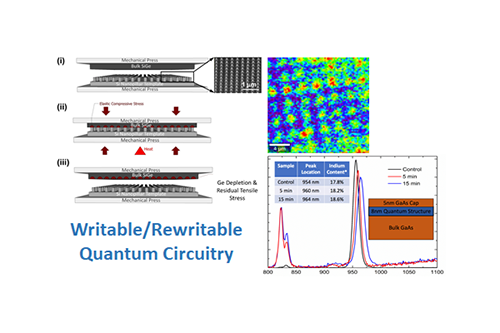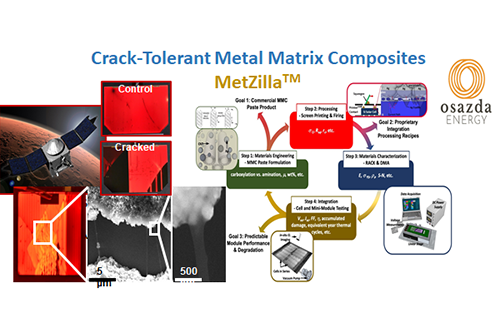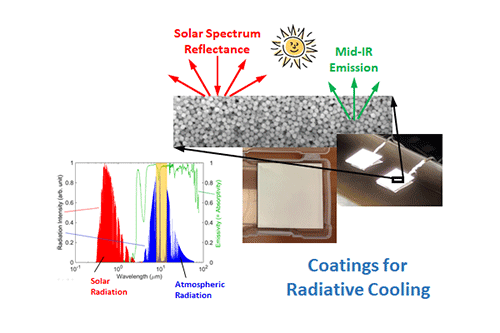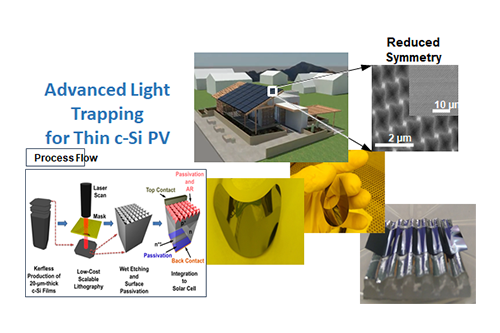Research Areas
Writable/Rewritable Quantum Circuitry
 Our group makes use of patterned stress field to create quantum structures in epitaxially grown compound semiconductors. This approach enables placing quantum dots/dashes at precise locations without resorting to high-resolution lithography, serial patterning by scanning probe, or strain-driven growth.
Our group makes use of patterned stress field to create quantum structures in epitaxially grown compound semiconductors. This approach enables placing quantum dots/dashes at precise locations without resorting to high-resolution lithography, serial patterning by scanning probe, or strain-driven growth.Crack-Tolerant Metal Matrix Composites
 – This composite technology enhances the durability and lifetime of metal contacts on solar cells against stress-induced fractures, thus increasing the lifetime of photovoltaic (PV) modules. The enhanced lifetime of PV modules increases bankability of utility-scale PV projects and reduces insurance premium on product warranties the module manufacturing companies have to offer. These economic benefits are intended to reduce the levelized cost of electricity and reach parity with fossil-fuel-generated electricity. We have a new startup company based on this UNM technology: www.osazda.com.
– This composite technology enhances the durability and lifetime of metal contacts on solar cells against stress-induced fractures, thus increasing the lifetime of photovoltaic (PV) modules. The enhanced lifetime of PV modules increases bankability of utility-scale PV projects and reduces insurance premium on product warranties the module manufacturing companies have to offer. These economic benefits are intended to reduce the levelized cost of electricity and reach parity with fossil-fuel-generated electricity. We have a new startup company based on this UNM technology: www.osazda.com.Coatings for Radiative Cooling
 Based on random arrangement of high-emissivity microspheres, properly sized and incorporated into a coating material (e.g., paint binder and silicone), we have developed a manufacturable film technology that would reduce the temperature of coated objects well below the ambient temperature. This work is done in collaboration with Prof. Sang Eon Han, who is intellectually leading the project.
Based on random arrangement of high-emissivity microspheres, properly sized and incorporated into a coating material (e.g., paint binder and silicone), we have developed a manufacturable film technology that would reduce the temperature of coated objects well below the ambient temperature. This work is done in collaboration with Prof. Sang Eon Han, who is intellectually leading the project.Advanced Light Trapping for Thin c-Si PV
 This advanced light trapping schemes make use of reduced symmetry in the surface corrugation to increase the light coupling efficiency. The increased light trapping increases the solar cell efficiency and allows very thin (< 50 microns) substrates to be used for fabricating solar cells. This work is also done in collaboration with Prof. Sang Eon Han, who is intellectually leading the project.
This advanced light trapping schemes make use of reduced symmetry in the surface corrugation to increase the light coupling efficiency. The increased light trapping increases the solar cell efficiency and allows very thin (< 50 microns) substrates to be used for fabricating solar cells. This work is also done in collaboration with Prof. Sang Eon Han, who is intellectually leading the project.